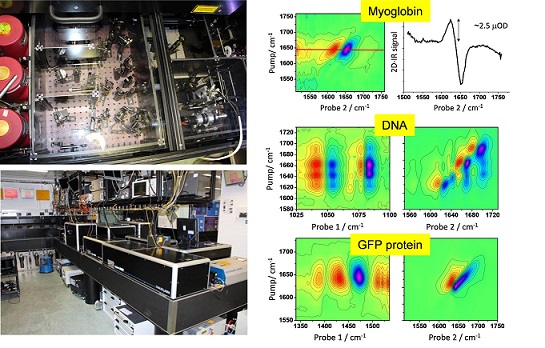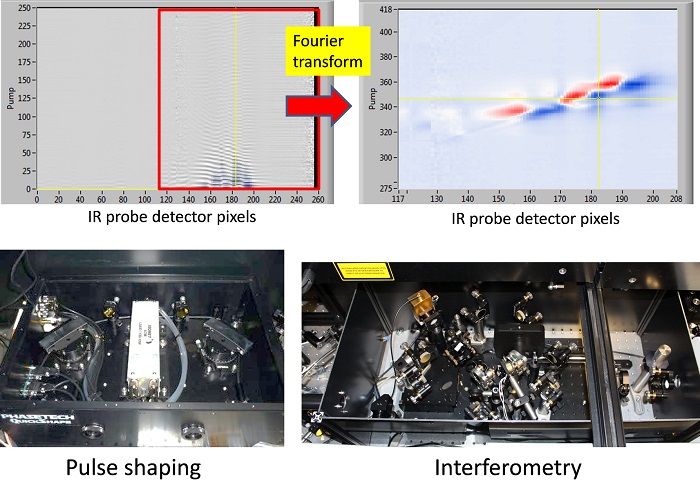 The correlation of one laser excitation frequency with another is known as
multidimensional spectroscopy, and on ultrafast timescales is the optical analogue of multidimensional nuclear magnetic resonance (NMR) spectroscopy. Applied to the vibrational degrees of freedom of a molecule, multidimensional spectroscopy gives a class of techniques starting with
two dimensional infrared (2D-IR) spectroscopy.
The correlation of one laser excitation frequency with another is known as
multidimensional spectroscopy, and on ultrafast timescales is the optical analogue of multidimensional nuclear magnetic resonance (NMR) spectroscopy. Applied to the vibrational degrees of freedom of a molecule, multidimensional spectroscopy gives a class of techniques starting with
two dimensional infrared (2D-IR) spectroscopy.
Examples of questions addressable by 2D-IR include: How long is water's H-bond memory? Are protein binding sites dynamic on ultrafast timescales? Can we detect non-bonded interactions of a drug in a protein binding site? What is the connectivity and interactions of different functional groups in a molecular system? How dynamic is the solvent around a molecule?

The Ultra facility currently has three different platforms for performing 2D-IR, with a programme of continuous renewal and development of our systems:
- 50 fs, 10 kHz pump-probe using IR pulse shaping or interferometry, dual OPAs for two probe spectral regions and 2x128 element MCT array spectrometers
- 200 fs, 100 kHz pump-probe using IR pulse shaping, three OPAs for two probe spectral regions and an independently tunable pump, with 2x128 element MCT array spectrometers.
- Narrowband (1-2ps) pump, fs probe using two synchronised regenerative amplifiers. This setup is particularly suited to transient 2D-IR measurements (UV/Vis or IR pump, 2D-IR probe). 2x128 element MCT array spectrometers.
Selected recent publications
